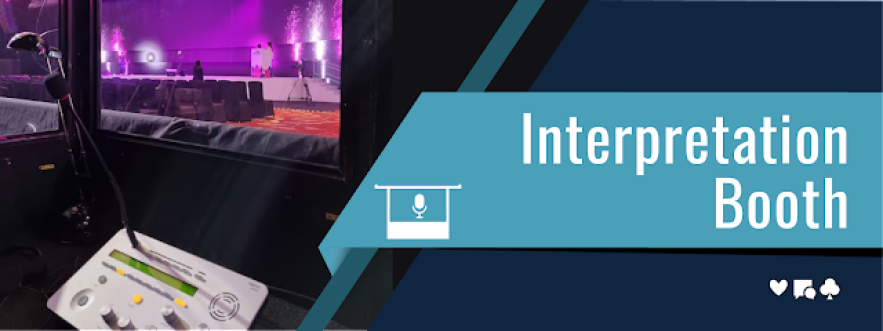Interpretation, an artful craft that bridges linguistic gaps, has always been a demanding job. It requires a unique blend of skills, thorough preparation, unwavering focus, and, of course, the right tools. Over the years, interpretation booths have witnessed significant advancements in technology. These technological innovations have not only streamlined the interpretation process but have also elevated the quality of service provided to clients. In this article, we delve into the future trends of interpretation booths and explore the exciting possibilities on the horizon.
Technological Trends of Interpretation Booths
The field of interpretation is dynamic, adapting to the ever-evolving demands and requirements of a globalized world. Here are some of the key technological trends that are poised to revolutionize interpretation in the coming years:
1. Computer-assisted Interpreting
One of the most noteworthy advancements in interpretation technology is computer-assisted interpreting. Interpreters can now harness the power of sophisticated software and tools to enhance the accuracy and effectiveness of their work. These computer-assisted tools are invaluable assets for interpreters, aiding them before, during, and after assignments.
Before an interpretation session, these tools can assist interpreters in researching complex terminology and content preparing specialized glossaries. During the session, they provide real-time assistance by suggesting translations and context-appropriate vocabulary. Afterward, they facilitate the creation of comprehensive post-session reports, ensuring that the interpreted content is well-documented.
2. Remote Interpreting (RI)
In recent years, remote interpreting has gained immense popularity. The global shift towards remote and work-from-home operations, accelerated by various factors including the COVID-19 pandemic, has made RI a preferred choice for many businesses. This technology offers unparalleled convenience and flexibility to interpreters while reducing operational costs for organizations.
Remote interpreting allows interpreters to provide their services from virtually anywhere, breaking down geographical barriers. Whether it’s a multinational conference or a crucial business negotiation, RI ensures that language is no longer an obstacle to effective communication. It offers interpreters the freedom to work remotely, which can be a game-changer for those seeking a better work-life balance.
3. Virtual Reality (VR)
Imagine stepping into a virtual world where language barriers cease to exist. Virtual reality has found its way into the realm of interpretation, promising immersive and engaging experiences for all participants. By donning VR headsets, users can participate in meetings, conferences, or negotiations as if they were physically present.
In a VR interpretation setting, language takes on a new dimension. It’s not just about words; it’s about the entire experience. Participants can interact with virtual environments, explore 3D representations of data, and engage in cross-cultural experiences that were once limited by geographical boundaries. This technology fosters a deeper understanding of the topics discussed, transcending mere words.
4. AI-based Interpreting
Artificial Intelligence (AI) has permeated nearly every aspect of our lives, and interpretation is no exception. AI-based interpreting leverages natural language processing and machine learning to handle tasks that traditionally require human intelligence. The speed, precision, and scalability of AI are undeniable advantages, but they also bring forth a host of legal, moral, and social considerations.
AI interpreters can translate vast volumes of text in seconds, making them invaluable for businesses dealing with large amounts of multilingual content. However, the absence of human intuition can sometimes lead to inaccuracies, especially in contexts where cultural nuances play a significant role.
Challenges and Considerations
While these technological trends hold immense promise, they also present challenges and considerations that cannot be ignored. For instance, the legal and ethical aspects of AI-based interpreting raise questions about privacy and accuracy. Additionally, the human touch, with its capacity for empathy and cultural sensitivity, remains irreplaceable in many situations.
Interpreters must adapt to these evolving trends while preserving the core values of their profession. Continued training and upskilling are essential to harness the potential of these technologies effectively. Moreover, the industry must strike a delicate balance between embracing technological innovations and maintaining the integrity and authenticity of interpretation.
In conclusion, interpretation booths are undergoing a transformative evolution driven by technology. The future promises a fusion of human expertise and cutting-edge tools, resulting in more accurate, accessible, and immersive interpretation experiences. As we look ahead, the horizon is dotted with possibilities, and interpreters who embrace these trends with diligence and adaptability are poised to lead the way into an exciting future of language and communication.


